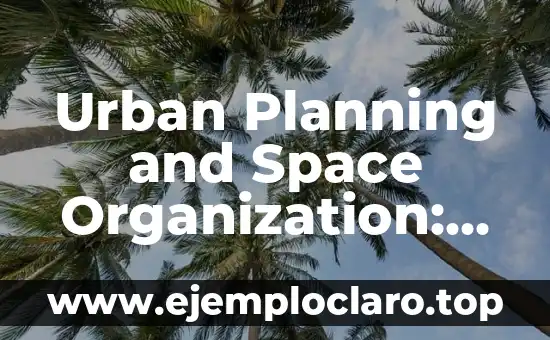In the heart of modern urban development lies the concept of urban planning and space organization, a crucial discipline that molds the fabric of our cities. This practice is essential for creating sustainable, functional, and livable environments, addressing the needs of growing populations while preserving the quality of life and environmental balance. By understanding and applying these principles, we can build cities that thrive for generations.
What is Urban Planning and Space Organization?
Urban planning and space organization refer to the strategic design and management of urban areas to optimize land use, transportation, and infrastructure. This discipline ensures that cities are functional, aesthetically pleasing, and sustainable. It involves collaboration among architects, engineers, policymakers, and the community to create cohesive urban environments.
Historically, the renovation of Paris in the 19th century by Georges-Eugène Haussmann is a landmark example, transforming the city into a modern metropolis with broad boulevards and improved sanitation, which influenced urban planning worldwide.
Designing Livable Cities Through Effective Urban Planning
Creating livable cities involves more than just structuring buildings; it’s about crafting communities. Urban planners focus on accessibility, green spaces, and social infrastructure, ensuring that cities are inclusive and support the well-being of all residents. The process includes zoning laws, public transport networks, and community engagement to reflect the needs and identity of each area.
Examples of Successful Urban Planning Strategies
Cities like Barcelona, with its grid system and public squares, Copenhagen’s bike-friendly infrastructure, and Curitiba’s innovative public transport, showcase effective urban planning. These examples highlight how strategic planning can enhance quality of life, reduce congestion, and promote sustainability.
The Role of Sustainability in Modern Urban Planning
Sustainability is a cornerstone of contemporary urban planning. By prioritizing green areas, energy-efficient buildings, and public transportation, cities can reduce their environmental impact. Urban farms, renewable energy integration, and waste management systems are key elements in creating eco-friendly urban spaces.
Key Components of Urban Planning
Effective urban planning encompasses several essential components:
– Transportation: Efficient public transport and pedestrian-friendly designs.
– Green Spaces: Parks and gardens that promote biodiversity and recreation.
– Housing: Affordable and diverse residential options.
– Economic Zones: Areas zoned for commerce and industry to stimulate growth.
– Infrastructure: Reliable utilities and services ensuring urban functionality.
The Evolution of Urban Development
Urban development has evolved significantly, from ancient cities like Rome to modern metropolises. This evolution reflects changing societal needs, technological advancements, and environmental consciousness. Understanding this journey helps us appreciate the complexity and importance of urban planning in shaping our future.
The Purpose of Urban Planning
Urban planning serves multiple purposes: enhancing quality of life, driving economic growth, and ensuring environmental sustainability. By addressing these aspects, it creates vibrant, resilient cities that meet the needs of their inhabitants while preserving natural resources for future generations.
Urban Space Planning: Key Aspects
Urban space planning involves crucial elements such as land use, transportation, and community engagement. It requires balancing diverse needs to create harmonious urban environments that are both functional and aesthetically pleasing.
Challenges in Urban Planning
Urban planners face challenges like rapid urbanization, climate change, and social inequality. Addressing these issues requires innovative solutions, such as adaptable housing, green infrastructure, and inclusive zoning policies to ensure equitable urban development.
Defining Urban Planning
Urban planning is the discipline focused on optimizing urban spaces through strategic land use and design. It aims to create cities that are sustainable, inclusive, and resilient, enhancing the quality of life for all residents.
The Origins of Urban Planning
The origins of urban planning trace back to ancient civilizations, with cities like Babylon and Pompeii exhibiting structured layouts. The modern concept evolved in the 19th and 20th centuries, influenced by industrialization and urbanization, leading to the comprehensive strategies we see today.
Understanding Urban Space Planning
Urban space planning is about designing cities that are not just functional but also foster community and sustainability. It involves creating spaces that are accessible, safe, and environmentally conscious, reflecting the cultural and social identity of each city.
Challenges in Implementing Urban Planning
Implementing urban planning strategies presents challenges like funding, political will, and public resistance. Despite these obstacles, successful projects demonstrate the positive impact of well-planned urban spaces on community life and environmental health.
Applying Urban Planning in Practice
Applying urban planning involves collaboration between various stakeholders. For instance, in academic research, it informs policy development, while in professional settings, it guides project implementation. Public awareness campaigns also play a role in engaging communities in urban development.
INDICE




